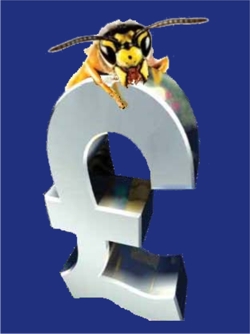Follow an integrated wasp management approach which focuses on wasp sting prevention rather than wasp nest annihilation. It’s a sensible way to make sure that every year is a decent wasp year, whatever the weather, says WaspBane.
As WaspBane explains, historically, wasp trap performance has been measured by analysing the numbers of wasps caught by the wasp trap. It now transpires that this measure is misleading and may in fact be dangerous. Wasp trap efficiency is a measure of the ability of a wasp trap to kill all of the wasps that it catches. Logic would suggest that a high efficiency wasp trap will kill lots of wasps. In fact, the converse has been found to be true.
| High efficiency wasp traps that kill 100% of the scouting wasps that they catch prevent such wasps from returning to their nest to recruit more wasps. It follows then that despite killing only a few scouting wasps, high efficiency wasp traps drastically reduce the background population of wasps in their vicinity. Low efficiency wasp traps on the other hand, allow scouting wasps to escape to their nests to recruit more of their colleagues. Because such traps still kill a proportion of the wasps they attract, they end up killing far more wasps than high efficiency traps but they still attract more wasps than they kill and so end up raising the background population of wasps in their vicinity. By using wasp persistence studies to evaluate wasp trap performance, inadvertent use of low efficiency traps can be avoided. Wasp persistence studies are relatively easy to perform and involve comparing the number of wasps persisting within a two metre radius of the different traps under test under the same test conditions over a two minute period at the same time of each day (recommended between 14.00 and 16.00) over a 28 day period*. Given that newly emerging medical data suggests the number of fatalities in the UK from wasp sting induced heart attacks probably numbers in the hundreds or thousands per annum, it is imperative that proprietors of outdoor catering and leisure properly discharge their duty of care to their patrons which includes the use of high efficiency wasp traps. * Full method statements are available on request. Contact [email protected] or visit www.waspbane.com. Free prize draw To enter, click here, and give details of your name, company name with full postal address, telephone number and email address. |
|



